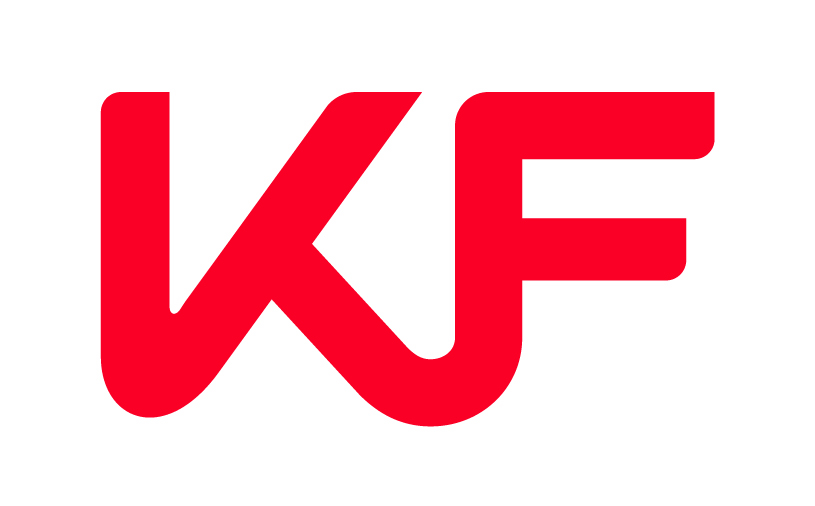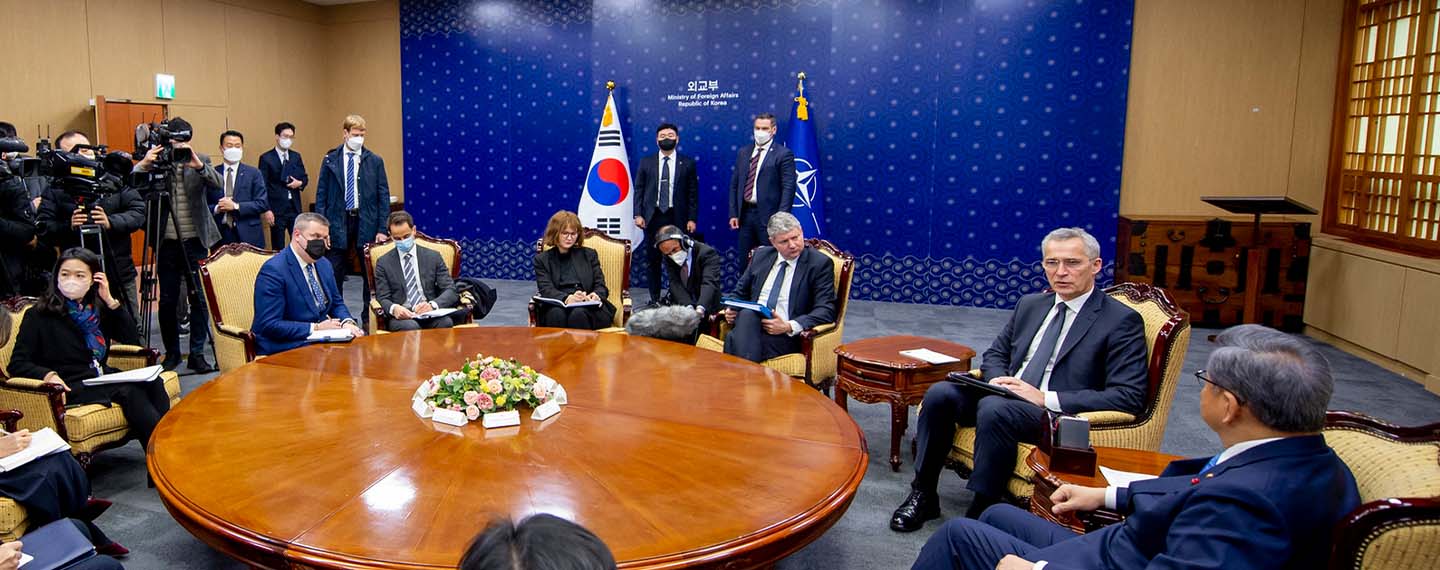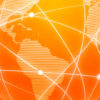Theme
This paper analyses the benefits of defence cooperation between NATO and South Korea from a European perspective.
Abstract
Against the backdrop of growing strategic cooperation between NATO and the so-called Asia Pacific 4 countries (AP4), this paper focuses on NATO-Republic of Korea (ROK) cooperation from a European perspective by looking at three key areas: (1) the need to think about deterrence from an inter-theatre perspective; (2) arms sales and defence-industrial cooperation; and (3) practical cooperation, especially in maritime security and intelligence.
Analysis
NATO and its AP4 partners, South Korea, Japan, Australia and New Zealand (dubbed AP4), are engaged in a process of strategic rapprochement, as highlighted by the presence of the leaders from the four countries at the Alliance’s latest summits in Madrid (2022) and Vilnius (2023). This closer alignment between NATO and AP4 is arguably driven by a mutual sense of growing geo-strategic interdependence between the Euro-Atlantic and Indo-Pacific regions, further compounded by Russia’s invasion of Ukraine. The US has been a chief advocate of intensifying the security ties between its European and Indo-Pacific allies. For their part, European allies have also stepped up their own interest in the Indo-Pacific, recognising the region’s growing economic and strategic importance, as reflected in several national strategies and at the EU-level.[1]
To be sure, the Alliance’s strategic attention is focused on assisting Ukraine to defend itself against aggression, and upholding deterrence in Eastern Europe. Moreover, the recent wave of instability in the Middle East also generates pressure for the allies to pay more attention to the southern neighbourhood. That said, the institutionalisation of high-level exchanges between NATO and AP4 does signal a growing interest in the Indo-Pacific region, in furthering global cooperation with Indo-Pacific partners and in the possible implications of China’s rise for Euro-Atlantic security. Indeed, the Vilnius Summit’s communiqué alludes to allied concerns over the PRC’s coercive policies and challenges to NATO’s interests, security and values. Such concerns have arguably been an important driver of the high-level exchanges between NATO and the AP4. These started with a Foreign Minister-level meeting in 2020, followed by the participation of the AP4’s heads of state and government at NATO’s Madrid and Vilnius summits. NATO insists that its core focus is on military security in the Euro-Atlantic Area of Responsibility and remains wary of playing a direct security role in the Indo-Pacific. However, it endorses a cooperative security approach, and seeks to strengthen partnerships, political dialogue and practical cooperation with like-minded Indo-Pacific partners to tackle cross-regional challenges and shared security interests, and uphold an open and rules-based international order.
This paper analyses NATO-AP4 cooperation by focusing on the opportunities to develop further ties with one regional partner: the Republic of Korea (ROK). Specifically, while NATO-ROK cooperation has by and large been centred on non-traditional security issues, and areas like cyber-security and countering hybrid threats, this paper explores the added value of defence cooperation. We carry this assessment from a European perspective, examining NATO’s cooperation with the ROK in combination with existing European initiatives for the Indo-Pacific, and detail three of its potential contributions: (1) boosting regional deterrence and stability; (2) strengthening Europe-ROK ties through arms exports and defence industry cooperation; and (3) providing NATO’s European members with an point of entry to the Indo-Pacific to develop practical cooperation.
NATO’s growing security cooperation with South Korea
Much of the literature on NATO-AP4 cooperation has focused on Japan or Australia, arguably the two regional partners with the deepest ties to the Alliance. However, we focus on the ROK, whose importance has been recently underlined by its contribution to European defence-industrial capacities in light of the Ukraine war.
NATO’s institutional cooperation and dialogue on security and defence with South Korea started in 2005. Practical cooperation with South Korea took place in Afghanistan from 2010 to 2013 and has developed under NATO’s ‘partners across the globe’ initiative. In Afghanistan it remained limited to civil-military support for governance capacity-building missions. Beyond that, practical cooperation has been displayed in transnational issues, in particular maritime cooperation actions against piracy and, more recently, in cybersecurity, with South Korea’s notable participation in NATO’s Cooperative Cyber Defence Centre of Excellence (CCDCOE) in 2022. Against the backdrop of a worsening security environment, cooperation is being expanded as reflected by the updating of the NATO-ROK IPCP, signed in 2012, to the new bilateral ITPP signed in July 2023. This new agreement constitutes a substantial step forwards by increasing the number of areas of cooperation from seven to 11, now including dialogue and consultations to promote mutual understanding on common security threats, among other issues. Under the ITPP, the two sides also agreed to hold regular working- and senior-level talks on political and military affairs, signalling more institutionalised ties.
In the defence field, South Korea stands out as NATO’s AP4 partner with the highest defence spending in relative terms, at 2,7% of GDP in 2022. Critically, Seoul also shows a growing interest in deepening its ties with the Alliance, as reflected by its official diplomatic accreditation to NATO in 2022. Simultaneously, President Yoon Suk-yeol has endorsed a more proactive approach towards global security, with the ambition of playing a more active role beyond the Korean Peninsula and to become a ‘global pivotal state’. This is evident from South Korea’s latest National Security Strategy and Indo-Pacific outlook, even though such an approach is still at an early phase and achieving a broad bi-partisan consensus is needed to ensure it extends beyond the current government. In addition, South Korea also shares an inclusive approach to the Indo-Pacific and regional security in line with NATO’s, which facilitates Europe’s engagement with the region.
Deterrence: an inter-theatre perspective
Cooperation between NATO and its AP4 partners (including the ROK) has so far focused primarily on non-traditional or transnational security challenges, such as cyber, disinformation, proliferation and terrorism. However, the rise of great-power revisionism in Europe and the Indo-Pacific simultaneously calls for a more structured NATO-AP4 dialogue on deterrence.
Indeed, NATO and its Indo-Pacific partners have remarkably similar strategic and operational priorities: how to strengthen deterrence in the face of great-power revisionism and how to generate the forces, operational concepts, capabilities and technologies required to that end. Deterrence is NATO’s first core mission –indeed, in the face of mounting Russian assertiveness, strengthening deterrence in Eastern Europe has become the Alliance’s political and strategic priority–. Deterrence is also the ROK’s foremost priority. In 2023, for the 70th anniversary of their alliance, the US and the ROK issued the Washington Declaration, reaffirming nuclear deterrence and deterrence against North Korea. In November 2023 South Korea and the US also revised their Tailored Deterrence Strategy (TDS), established in 2010, with the same goal of updating deterrence against North Korea’s advancing nuclear and missile threats. This reflects shared concerns and an evolving perception of North Korean and Chinese capabilities and increased assertiveness, the risk of deterrence failure and the need to strengthen it.
At the same time, the fact that US military power constitutes the centre of gravity of deterrence in both Europe and North-East Asia means that NATO’s European allies and the ROK pay close attention to how Washington prioritises its defence resources, and how its engagement in one region might affect its ability to provide deterrence in another region. In particular, the European allies realise that deterring China in the Indo-Pacific is likely to put a significant strain on US military planning and resources over the long and medium terms, and therefore have an impact on Euro-Atlantic security. Conversely, the war in Ukraine has raised questions about Washington’s ability to keep its focus on the Indo-Pacific. Such trade-offs exist even within the same region. Indeed, Korean officials have voiced concerns about possible DPRK kinetic provocations against South Korea in case of a contingency in the Taiwan Strait. They have also denounced North Korea’s direct and indirect support for Russia’s war on the Ukraine, and the possibility that North Korean equipment was used during Hamas’s assault on Israel on 7 October, thus contributing to destabilisation in Europe and the Middle-East. Conversely, South Korea’s intelligence agency has denounced Russian support for the successful launch of the first North Korean spy satellite.
The centrality of deterrence to NATO and ROK defence planning –and their respective concerns about US strategic prioritisation– calls for a more structured bilateral dialogue on deterrence. Even if their main threat referent or area of responsibility is indeed different, the fact that the challenges NATO and the ROK face are so similar underscores the potential of mutual exchanges and learning in key areas such as nuclear deterrence and the link between nuclear and conventional forces. More generally, a similar threat landscape underlines the existence of important synergies and the potential for structured cooperation in key areas like operational planning, capability development and military-technological innovation. Last but not least, greater intelligence sharing, staff-to-staff exchanges and a mainstreaming of military diplomatic presence in each other’s region will help improve their situational awareness in relation to inter-theatre force trade-offs.
Arm sales and defence industrial cooperation
Arms sales and defence-industrial cooperation are arguably the best example of how the ROK can (indirectly) contribute to deterrence and security in the Euro-Atlantic region. Indeed, defence industrial cooperation was an important topic during the NATO-AP4 talks in Vilnius, and ROK arm sales and industrial cooperation with Poland in particular underscore Seoul’s positive contribution to European security.
In July 2022 Poland reached a framework agreement with the ROK for the acquisition of 672 K9 howitzers, 288 K239 Chunmoo multi-rocket launchers, 1,000 K2 tanks and 48 FA-50 fighter jets. Since then, binding contracts have been secured for the delivery of the 48 fighters, 212 (of 672) howitzers, 218 (of 288) multi-rocket launchers and 180 (of 1,000) tanks. The latter are instrumental to the replacement of Poland’s fleet of T-72 tanks transferred to Ukraine, and highlights that these exports not only contribute to modernising European armed forces, but they also indirectly contribute to supporting Ukraine, by allowing the replacement of the assets transferred from NATO allies to Kyiv. Moreover, growing cooperation between Russia and the DPRK following Pyongyang’s recent arms supplies to Moscow could change Seoul’s calculations and pave the way for a direct use of ROK military exports to help Ukraine. In this regard, ROK officials recently pointed to the likelihood that the DPRK’s launch of its first surveillance satellite was possible thanks to technical assistance from Russia. The launch led South Korea to suspend the ROK-DPRK Comprehensive Military Agreement, signed in 2018, allowing it to step up its surveillance and military capabilities along the border of the Korean Demilitarised Zone.
ROK arms exports have triggered concerns across Europe, as off-the-shelf purchases can disincentivise a much-needed European defence-industrial awakening. However, European industry has currently reached its maximum production capacity. As a result, the EU and its member states will probably fall short of supplying Ukraine with the promised one million artillery shells by March 2024. In addition, European countries have to simultaneously replenish their arsenals, which in some cases have been totally depleted. This is the case, for instance, of Denmark, which has sent all its artillery systems to Ukraine, and Estonia, which sent all its 155mm artillery munitions. This makes external inputs crucial to support Ukraine and Europe’s defence in the short to medium term. Moreover, low production capabilities are the result of low European defence commitments since the end of the Cold War, hindering industrial capabilities and competitivity. At the NATO level, the US also faces production constraints and, for now, is unable to fully cope with Ukraine’s demand, let alone Europe’s. In contrast, South Korea’s high levels of defence expenditure and national defence procurement have endowed it with large-scale production capacities, which can be rapidly scaled up. Last but not least, Seoul’s comparative advantage also stems from a focus on indigenisation and cost-competitiveness rather than cutting-edge technology, offering a case of complementarity with European industry. South Korea’s defence industry still relies heavily on foreign components, as highlighted by the case of the FA-50, a version of the T-50 supersonic jet trainer developed with Lockheed Martin.
Through these arms exports, South Korea has become a key and long-term partner for Poland’s military modernisation plans and development of national industrial capabilities. This has also strengthened South Korea’s role as global arms exporter, with 74% export growth registered between 2013-17 and 2018-22. Since 2010 Seoul has supplied arms exports to Estonia, Finland and Norway, but also to the UK and the US. In the Indo-Pacific, Seoul also supplied arms to other AP4 countries, namely Australia and New Zealand, but also India, Indonesia, the Philippines and Thailand. South Korea is reportedly exploring financing tools to close further contracts with Poland by engaging with Korean commercial banks. However, future deals might be affected by the change of Polish government and by Poland’s limited budgetary capacity, until now circumvented by discretionary funds. South Korea has also recently signed MoUs on defence industrial cooperation with Slovakia and Romania. However, future deals with European members of NATO might be more limited, despite an overall increase of their military budgets and ambitions to comply with a target of 2% of GDP for annual defence expenditure. Poland is by far the main market in Central and Eastern Europe, both in absolute terms and in percentage of GDP –Poland’s 2023 defence expenditure amounted to 3.9% of its GDP–.
In any case, South Korea’s arms exports to Poland are serving as a basis for increased defence cooperation between the two countries, offering opportunities for high-level exchanges between the military, joint training and interoperability. More specifically, they strengthen Poland’s role as an arms production hub. Starting from 2026, future K2 batches –following the delivery of the first 180 K2 tanks– are expected to be built in Poland, opening the way for technology transfers and the participation of the Polish defence industry. Polish and Korean officials have also envisioned possible joint-ventures to supply other NATO countries. It should be noted that, beyond this visible example, industrial cooperation offers two-ways opportunities, as shown by the supply of A330 Multi Role Tanker Transport (MRTT) by Airbus to the Korean armed forces in 2019 and the launch of a co-development project on helicopters. Joint development of new weapons systems or technological applications of emerging technologies to the military domain would allow implementing the objectives of the ITPP on cooperation in emerging technologies (artificial intelligence, space, missiles and quantum technologies) and multinational projects in the field of defence science and technology. Agreements, like the one signed between South Korea and Germany on the protection of military secrets, could bolster such a cooperation in the defence industry.
Practical cooperation: the ROK as an attractive entry point into the Indo-Pacific
South Korea also appears as a relevant partner for NATO to engage in the Indo-Pacific. This is especially the case if seen from the perspective of the European allies, which, in contrast to the US, are not strongly established as security actors in the region. South Korea shares Europe’s normative and inclusive approach to the Indo-Pacific, and to global security more broadly. It has aligned with its like-minded partners by condemning Russia’s invasion of Ukraine and joining sanctions against Russia. It has also become more vocal in expressing its concerns against actions jeopardising regional stability beyond the Korean Peninsula and is increasingly monitoring stability in the Taiwan Strait and the East and South China Seas. At the same time, Seoul rejects the concept of decoupling, seeks to preserve strong economic relations with China and believes political dialogue with the PRC is necessary for regional stability, including in the Korean peninsula itself. This speaks to Europe’s quest for inclusiveness and interest in preserving a dialogue with Beijing, but also with NATO’s view on China, which outlines normative divergences but has constantly and explicitly rejected framing it as an adversary. Hence, institutionalising and strengthening its partnership with Korea can provide a politically safer entry point for NATO into the Indo-Pacific, not least by helping counter a narrative that depicts the Alliance’s engagement as an extension of US containment strategy and a source of destabilisation.
Practical cooperation between NATO and the ROK in the region could be further developed in two specific areas: maritime security and intelligence sharing. All AP4 countries are maritime powers, and the navy is the main tool of projection for European countries in the region. In addition, NATO and the ROK have a legacy of cooperation in this field, and several European countries are committed to pursuing and stepping up their naval presence in the Indo-Pacific. ROK-NATO cooperation in the maritime domain has revolved primarily around joint missions and exercises within Operation Ocean Shield, from 2009 to 2016 on the East Coast of Africa. In parallel, and after the end of NATO’s mission, cooperation with European countries has also taken place under the aegis of the EU NAVFOR Atalanta mission, and the 2016 EU-ROK Common Security and Defence Policy (CSDP) Framework Partnership Agreement. In 2023 high-level EU defence officials visited the Republic of Korea and the ROK Navy conducted combined training with European navies in the Gulf of Aden, during manoeuvres between the multinational Combined Task Force 151 and EU NAVFOR’s Task Force 465. The EU’s Indo-Pacific strategy also envisions participation in joint exercises with Indo-Pacific partners. NATO and South Korea may have different priorities in this field. ROK maritime security priorities target the DPRK and the enforcement of UNSC sanctions against it. NATO is more focused on upholding freedom of navigation as part of deterrence and defence against threats in the maritime domain. Individually, its European members also put more emphasis on freedom of navigation and respect for the United Nations Convention on the Law of the Sea (UNCLOS). This is reflected in their national strategies, in France and Germany for example, and translates into naval detachments aimed at enforcing the freedom of navigation in the Indo-Pacific, including the South China Sea. But NATO and European partners also share the ROK’s concerns over North Korea’s nuclear and ballistic activities, and European naval assets actively participate in the monitoring of UNSC sanctions against the DPRK. On the other hand, South Korea also acknowledges the issue and supports freedom of navigation in the region, and has already expressed the need for a peaceful resolution to the South China Sea disputes, although it has mainly kept a non-military approach.
Cooperation with South Korea on maritime security could be developed on the sidelines of existing joint maritime exercises organised or attended by European NATO members and AP4. It is less clear if NATO can set up stand-alone missions in the region, but the Indian Ocean might be the most relevant area to do so. Whatever the method, cooperation at the tactical and operational level would contribute to NATO-ROK’s IPTT ambition to enhance interoperability and strengthen defence capabilities. NATO and the ROK should also consider extending maritime security cooperation to third countries and contribute to maritime security capacity building to strengthen maritime resilience across the region. As it could comprise military and non-military elements, it could offer a more consensual way to engage with regional actors. This might be the case with ASEAN countries, especially as some of them have proved reluctant to see NATO engage in the Indo-Pacific. The European and South Korean Indo-Pacific strategies have identified them as key partners for security and South Korea’s 2023 National Security Strategy also labels ASEAN as a key partner for promoting regional peace and shared prosperity and to establish comprehensive and strategic partnerships.
Intelligence sharing is another tangible area of cooperation, with a high impact but without involving a high-profile presence in the region. NATO and the ROK aim to expand their cooperation on military-intelligence sharing, which has gained traction amid the war in Ukraine and become even more prominent and essential to the Alliance’s decision-making and strategic analysis and planning. This is closely related to NATO-ROK’s IPTT goal of developing bilateral dialogue and consultations to enhance mutual understanding of common security challenges and could greatly contribute to NATO and the European countries’ understanding of the region. NATO allows institutionalised exchanges at the level of Ministries of Defence, in addition to those of Foreign Affairs. South Korea and NATO held a first military meeting in Seoul in 2023, during which they committed to holding annual military talks and establishing a military-to-military consultative body. Such initiatives are crucial for exchanges and to increase mutual knowledge on their respective strategic concepts, command and control structures, assets, doctrines or procedures, but also of their conception of their supporting roles in the event of a crisis. As highlighted by the AP4’s assistance to Ukraine, this role could take the form of humanitarian, diplomatic, economic or military support or the adoption of sanctions. Planning for response to crisis situations and potential support will be key to ensure predictability, credibility, reliability and the avoidance of miscalculations and expectation gaps between partners, and could benefit from NATO’s experience and focus on crisis prevention, response, preparedness and management.
Conclusions
Growing geo-strategic interdependence between the Euro-Atlantic and Indo-Pacific has spurred greater cooperation between NATO and AP4. Specifically, NATO’s partnership with the ROK has gained public prominence in light of Seoul’s significant arms sales to Poland, which have indirectly facilitated Warsaw’s efforts to assist Ukraine militarily. Such a dynamic, however, is anchored in a broader trend, namely, the growing political and strategic convergence between NATO and the ROK. Such a convergence has been possible thanks to NATO’s growing awareness of the Indo-Pacific’s centrality to global security, and the ROK’s pro-active and global turn in foreign policy.
From the vantage point of NATO’s European allies, the partnership with the ROK brings added value in two important respects. The first has to do with the dynamism and depth of Seoul’s defence industrial base, which becomes particularly attractive at a time of ammunition and armaments shortages in Europe. The second relates to the ROK’s foreign policy outlook. On the one hand, Seoul’s inclusive approach to Indo-Pacific and global security, and its reservations about decoupling from China economically or geopolitically, chime with the preferences of most European allies. As such, cooperation with the ROK provides a safe entry point for NATO’s cooperation in and with the Indo-Pacific, ie, one that will help mitigate the narrative that the Alliance is a source of regional destabilisation. On the other hand, the ROK’s unambiguous support of Ukraine, increasingly global turn in foreign policy and growing rapprochement to Japan and the US-led alliance system in Asia help pave the way for a greater cooperation with NATO.
In association with the Korea Foundation

[1] France, Germany, the Netherlands, the Czech Republic, Lithuania, Italy and Ireland have adopted strategies, guidelines or outlooks on the Indo-Pacific. The EU also adopted its own Indo-Pacific Strategy in 2021, which identifies security and defence as one of seven priority areas.





